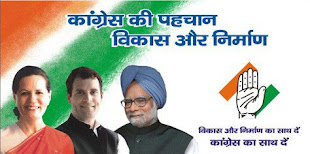V. Mohan Rao
India is gradually marching ahead to become a knowledge hub in the world thanks to various measures taken by the Government through its Literacy Mission and reforms in the education sector. Realizing that creation of new knowledge and its dissemination are critical to the progress and development of the society, the government has been taking effective steps like strengthening of existing higher educational institutions as well as creation of new knowledge based intuitions, striving quality and excellence in research both in public sphere as well as by not-for-profit private initiative. Putting its Literacy Mission high on agenda, the Government has initiated a number of measures including the adoption of the Right of Children to Free and Compulsory Education, to achieve higher literacy rate in the country. Constant efforts are also made to recasting of the National Literacy Mission to focus on literacy of women, reduction in the drop out rate of children at school levels and introduction of public private participation in the school education.
RIGHT TO EDUCATION (RTE) ACT, 2009.
The Act has come into force with effect from 1st of April 2010. It has been enacted to provide free and compulsory education to all children in the age group of 6 to 14 years. The provisions of the Act provide that with a view to prepare children above the age of three years for elementary education and to provide early childhood care and education for all children until they complete the age of six years. Under the Integrated Child Development Service Scheme (ICDSS), over 3.5 crore children between the age group of 3 to 6 years are being provided pre-school education in the Anganwadi Centres.
SAAKSHAR BHARAT
Saakshar Bharat, a new variant of the National Literacy Mission has been launched in September 2009. The Mission
SARVA SHIKSHA ABHIYAN (SSA)
Sarva Shiksha Abhiyan is the national flagship programme of the Government being implemented throughout the country. The World Bank provides financial assistance for implementation of SSA as sector wide support. The World Bank has reimbursed Rs.2736 crore during the last three years. During the 11th Plan, several schemes for strengthening existing higher educational institutions for enhancing access, quality, equity and relevance have been launched. A Task Force of eminent experts appointed by the Government has circulated a draft Bill for an overarching promotional and regulatory authority. The Government also proposes to set up 14 universities for innovation across 11th and 12th Five Year Plan to make India
NATIONAL ADVISORY COUNCIL
The Government has constituted a National Advisory Council (NAC) on 8th of July 2010 to over the see implementation of the Right to Education (RTE) Act. For 2010-11, a central budget allocation of Rs.15,000 crore has been made for the Sarva Shiksha Abhiyan (SSA), the main vehicle for implementation of the provisions of RTE Act. The 13th Finance Commission has given Rs.24,068 crore for the period 2010-11 to 2014-15 for elementary education.
LITERACY RATE
As per the 2001 Census, the literacy rate in 7 plus age group was 79.92 per cent in Urban areas and 58.74 per cent in rural areas showing a gap of 21.18 per cent between urban and rural literacy rates in the country. According to UNESCO Global Monitoring Report 2010 on literacy in the age group of 15 and above, India Sri Lanka
DROP OUTS
As per a study by the National Sample Survey Organisation in 2009, estimated 81.50 lakh children representing 4.28 of the child population in the 6 - 13 age group as school dropouts. The Government adopted a multi-pronged approach for reducing drop out rates. The Government has also taken several measures to strengthen the Mid Day Meal Scheme.
GROSS ENROLMENT RATIO IN HIGHER EDUCATION
The Government is planning to raise the Gross Enrolment Ratio in Higher Education from the present 12.4 per cent to 30 per cent by 2020. As per estimates, the country needs 27,000 additional colleges and over 24,000 technical colleges. The Knowledge Commission has estimated that 1500 universities would be needed as against the present 504 university level institutions. For achieving capacity expansion in higher education, the Government plans a mix of initiatives in stepping up public investment, encouraging not-for-profit private participation and public private partnerships.


























0 Comments